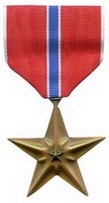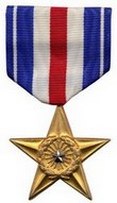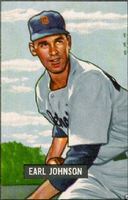

|
|

 Earl Johnson
Earl Johnson
Date and Place of Birth: April 2, 1919 Redmond, Washington
Died: December 3, 1994 Seattle, Washington
Baseball
Experience:
Major League
Position: Pitcher
Rank: First Lieutenant
Military Unit: Company B, 120th Infantry Regiment,
30th Infantry Division US Army
Area Served: European Theater of Operations
Johnson
was an outstanding high school athlete and in July 1937, aged 18, he
led the Johnson Paint Company team of Tacoma to the Washington state
semi-pro championship. He was a National Baseball Congress
all-America selection, and earned an athletic scholarship to St
Mary’s College.
At St
Mary’s, Johnson and teammate Cy Greenlaw dominated the opposition
but were still overshadowed by the outstanding collegiate pitcher of
the day, Emmett O'Neill. Nevertheless, Johnson had decided that
baseball was going to be his profession and he decided to pass up
the rest of is education in the fall of 1939. With the help of his
coach Earl Sheely he attracted the interest of the Boston Red Sox
and was sent to their training camp at Sarasota, Florida in the
spring of 1940.
The Boston
Red Sox sent him to Rocky Mount in the Piedmont League where he
played under Heinie Manush. "I was supposed to go to Canton, Ohio,
in a smaller league," Johnson explained. "But during spring training
Heinie Manush, who was managing Rocky Mount, talked Joe Cronin into
making the switch."
After
winning 12 games and posting a 2.67 ERA in 19 games he was called up
by the Red Sox and made his first major league appearance on July
20, 1940. He made a total of 17 appearances for Boston with a 6-2
won-loss record.
Suffering
from arm trouble, Johnson again made 17 appearances for Boston in
1941 with an ERA of 4.52. In January 1942, he entered military
service and sent a telegram to Red Sox general manager, Eddie
Collins at Fenway Park, which read: “Inducted into Army today. Best
Regards.”
Johnson served with the 120th Infantry Regiment of the 30th
Infantry Division, US Army. The 30th Infantry Division
arrived in England in February 1944 and trained in preparation for
D-Day. The division landed at Omaha Beach, Normandy on June 11, 1944
and spearheaded the St Lo break-through.
In
addition to the Bronze Star, Johnson also received a battlefield
commission promoting him to second lieutenant.
Months
later, Johnson was awarded a Silver Star for bravery during the
Battle of the Bulge, and further promotion to first lieutenant.
In 1945, Red
Sox general manager Eddie Collins received a letter from Johnson
dated February 10. "I have been in combat for six months," Johnson
wrote. "It sure has been a long road. It really has been tough. It
seems like I have been fighting for years. I sure will be glad when
it is over."
In October
1945, Johnson returned to the United States. He immediately returned
to his home in Seattle to spend his furlough, and had the
opportunity to work out briefly with the Seattle PCL team. Johnson
then went to Camp Jackson, South Carolina to await his discharge
which came in December.
Reminiscing about his Army life, Johnson told of
the time he and his platoon were trying to knock out some German
tanks. Earl threw a couple of hand grenades and missed. A member of
his platoon - a kid who had never thrown a baseball in his life -
threw two grenades and scored two direct hits. "If only I had that
kid's control," he concluded, "what a pitcher I would be."
Johnson
returned to the Red Sox in 1946 and hurled three hitless innings
against the Cardinals late in spring training. "After four years in
the Army, in which I didn't throw a ball," he declared, "I have just
begun to feel at home on the mound." Johnson pitched in 29 games for
the Red Sox in 1946, mainly as a reliever. He had a 5-4 won-loss
record and a 3.71 ERA. He had his best major league season in 1947,
appearing in 45 games, with a career-high 12 wins and a career-best
2.97 ERA.
Johnson
remained with the Red Sox until he was released following the 1950
season. He signed with the Tigers but only made six brief
appearances before being released in June.
Johnson
remained in baseball as a scout for the Red Sox. In all, he was
associated with the team for 44 years. He passed away on December 3,
1994 in Seattle, Washington, aged 75.
Created March 27, 2007. Updated August 21, 2007.
Copyright © 2007 Gary Bedingfield (Baseball
in Wartime). All Rights Reserved. 
